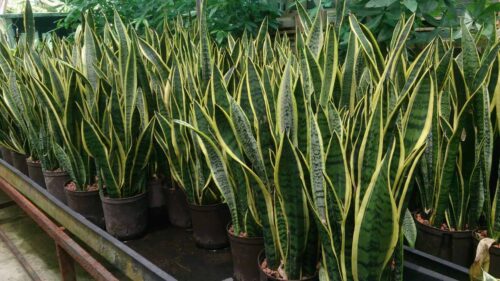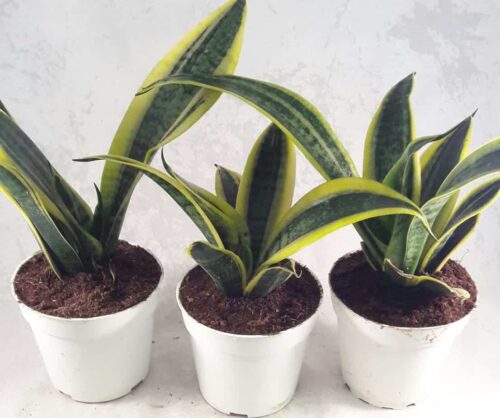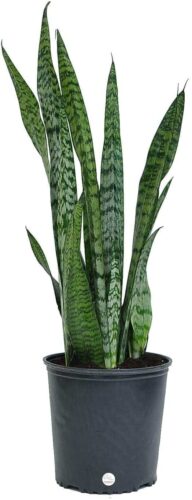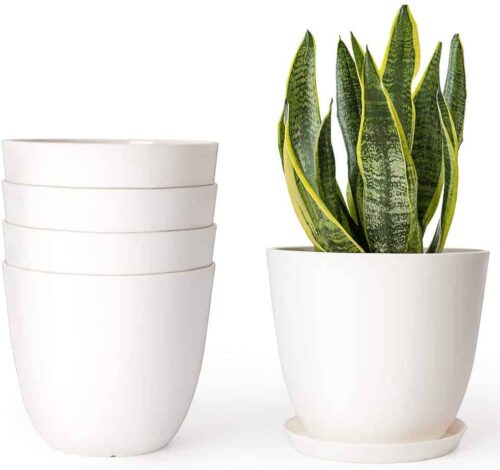Nowadays with a developing knowledge on plants and its benefits many have commenced planting them of their gardens. There is also one massive research claim wherein it indicates a few indoor plants are very beneficial in filtering terrible air first-rate in the house. Snake plant made in top 5 and pinnacle 10 listing of air purifying flora. Lets research what’s snake plant and why its named to be mother in law tongue is that some thing unique about it. Read On.
What is Snake Plant?
From there it won momentum and people started searching what is snake plant is a flowering plant which not often grows plants and a member of the Asparagaceae own family. This plant isn’t always a snake however its leaves have snake’s body like stripes with the precise sample on them. What Snake vegetation proved to be one of the excellent indoor flora and why i’m saying this is don’t deliver them water you’ll discover they have been still status clean and no longer complaining and no longer going to reveal any signs and symptoms of hate closer to you even a lazy man or woman can develop them.
Why is it Called mother-in-regulation’s tongue Plant?
Many folks who delivered this plant asked a question that why is it known as mom-in-regulation’s tongue continues to be doubtful and there is no answer to this question however what i apprehend is that this plant gives oxygen in days and night , even though it gets little mild it’s going to still make oxygen. Many have this of their bedroom and it definitely gives a boost to their sleep as it eliminates pollution gift within the air.
The care and upkeep of this plant is minimum and I even heard they may be extensively utilized in cooling down the temperature. These plant life store water in their leaves. If you touch them then you’ll locate it. Those individuals who stay in small homes can also purchase them, as they require very less space and these flowers received’t disturb you.
While I was writing this text they had been with me in my room and also you won’t trust I actually have eight of the pots in my room ,
I don’t need awful pollutants so I positioned them near me due to the fact maximum of my paintings is performed at home. Growing a snake plant is as smooth as cutting a cake at a birthday party. What is wanted earlier than you develop your first snake plant is selecting a good compost blend which drains water at a mild stage, now not too fast and now not too low.
Buy Snake plant from ETSY(recommended)

What is the Advantages of this snake plant is you can propagate them very without problems and don’t require lots expertise. Cutting a unmarried leaf can do the task here and putting that in a nicely tired pot.
1. What Are the Medicinal Uses of Mother-in-Law’s Tongue?
Mother-in-law’s tongue boasts a range of medicinal properties that make it more than just a visually appealing houseplant. From air purification to stress reduction, this green gem is a versatile healer. Let’s explore the top medicinal uses:
Air Purification and Oxygen Enhancement
Mother-in-law’s tongue stands out for its exceptional ability to purify indoor air. Its proficiency in removing toxins like formaldehyde and benzene makes it a natural air purifier. But did you know that it also contributes to oxygen production during the night? Unravel the science behind this phenomenon and how it can benefit your well-being.
Stress Reduction and Improved Sleep
The calming influence of mother-in-law’s tongue extends beyond its physical attributes. Discover how the plant’s presence can alleviate stress and anxiety, promoting a serene environment conducive to relaxation and improved sleep. Unearth the connection between greenery and mental well-being.
Medicinal Properties in Snake Plant Extracts
Explore the chemical composition of snake plant extracts that endow it with various medicinal properties. From antimicrobial attributes to potential anti-inflammatory effects, understand how these compounds contribute to the plant’s therapeutic value.
Respiratory Health Benefits
Delve into the impact of mother-in-law’s tongue on respiratory health. Uncover its potential role in reducing indoor air pollutants that can trigger respiratory issues. Learn about the plant’s historical use in traditional medicine for respiratory ailments.
2. Why is it Called Snake Plant?
The intriguing name “snake plant” holds a fascinating history that goes beyond its appearance. Let’s unravel the reasons behind this curious moniker and the cultural significance attached to it.
Origin of the Name: A Serpentine Connection
Trace the etymology of the term “snake plant” and discover the cultural narratives that link this botanical wonder to the serpent motif. Understand how ancient beliefs and symbolism have contributed to the naming of this resilient plant.
Resemblance to Snake Features
Explore the physical characteristics that led to the snake plant’s association with serpents. From leaf patterns to the plant’s growth habits, uncover the resemblances that might have inspired its intriguing name.
Cultural and Symbolic Significance
Beyond its biological characteristics, the snake plant holds cultural and symbolic importance in various societies. Investigate the myths, beliefs, and folklore surrounding this plant, shedding light on its diverse meanings across different cultures.
3. Mother-in-Law Plant vs. Snake Plant: Unraveling the Terminological Tangle
The terms “mother-in-law plant” and “snake plant” are often used interchangeably, leading to confusion. Let’s dissect these terms and understand the distinctions, if any, between the two.
Historical Context: Evolution of Nomenclature
Explore the historical evolution of the terms “mother-in-law plant” and “snake plant.” Investigate how the plant’s usage and cultural associations influenced the development of these distinct names.
Regional Variations in Terminology
Discover how different regions and cultures may have adopted varied names for this green companion. Uncover the linguistic nuances that contribute to the diversity in nomenclature and the plant’s common aliases.
Botanical Consistency: Are They the Same Plant?
Dive into the botanical details to ascertain whether the terms “mother-in-law plant” and “snake plant” refer to the same botanical species. Understand the taxonomy and botanical characteristics that define these names.
Practical Implications: Plant Care and Characteristics
From a practical standpoint, explore whether there are any significant differences in caring for a plant referred to as a “mother-in-law plant” compared to one labeled as a “snake plant.” Understand if the terminology impacts cultivation and maintenance practices.
4. Snake Plant Family Name: Kinship in the Plant Kingdom
Every plant is part of a larger botanical family, and the snake plant is no exception. Let’s delve into the family ties of the snake plant and explore its kinship in the vast realm of the plant kingdom.
Botanical Family Classification
Uncover the botanical family to which the snake plant belongs. Understand the criteria used in botanical classification and how these criteria place the snake plant within a specific family.
Phylogenetic Relationships: Plant Family Tree
Embark on a botanical journey to explore the phylogenetic relationships of the snake plant. Visualize its place in the intricate family tree of plants, understanding the shared ancestry with other botanical wonders.
Significance of Family Name in Horticulture
Examine the practical implications of knowing the snake plant’s family name in the realm of horticulture. Understand how this information can guide gardeners and plant enthusiasts in providing optimal care and creating harmonious plant arrangements.
5. Snake Plant Scientific Name and Family: Decoding the Botanical Identity
The nomenclature of plants involves not only common names but also scientific classifications. Let’s unravel the snake plant’s scientific identity, including its genus, species, and family.
Genus and Species: Precision in Naming
Explore the binomial nomenclature assigned to the snake plant, breaking down its genus and species names. Understand the significance of this precise nomenclature in scientific communication and taxonomy.
Taxonomic Classification: Beyond Genus and Species
Delve into the broader taxonomic classification of the snake plant. Understand how taxonomic ranks such as order, family, and subclass contribute to placing the snake plant within the larger framework of plant classification.
Botanical Identity in Practice: Implications for Gardeners
For avid gardeners and horticulture enthusiasts, understanding the snake plant’s scientific identity goes beyond academic curiosity. Explore the practical implications of this knowledge in cultivation, propagation, and creating botanical diversity in gardens.
6. 10 Benefits of Snake Plant: A Green Panacea for Well-Being
The snake plant isn’t just a visual delight; it’s a powerhouse of benefits for your well-being. Let’s explore the top 10 advantages that make the snake plant a green panacea in various aspects of life.
Air-Quality Enhancement: A Breath of Fresh Air
Uncover the role of the snake plant in improving indoor air quality. Explore how its unique ability to filter out pollutants contributes to a healthier and more breathable living space.
Low-Maintenance Elegance: A Gardener’s Dream
Discover why the snake plant is a favorite among both experienced and novice gardeners. Explore its resilience, adaptability, and minimal care requirements that make it a hassle-free addition to any indoor or outdoor space.
Feng Shui Harmony: Balancing Energy
Explore the ancient practice of Feng Shui and how the snake plant aligns with its principles. Understand the role of this plant in creating harmony, balance, and positive energy in living spaces.
Oxygen Boost at Night: Nature’s Nightcap
Delve into the unique characteristic of the snake plant that sets it apart from other houseplants. Uncover how it continues to release oxygen at night, contributing to a refreshing and rejuvenating atmosphere while you sleep.
Stress Reduction: Green Therapy
Explore the psychological benefits of having a snake plant as a companion. Understand how its presence can alleviate stress, anxiety, and promote a sense of well-being in today’s fast-paced and hectic lifestyles.
Aesthetic Appeal: Elegance in Greenery
Appreciate the visual allure of the snake plant. From its distinct leaf patterns to its upright growth, explore how this plant adds a touch of elegance and sophistication to any interior or garden.
Natural Humidifier: Moisture in the Air
Uncover the snake plant’s role as a natural humidifier. Explore how it releases moisture into the air, creating a more comfortable and healthier environment, especially in dry climates.
Improving Focus and Productivity: Green Workspace
Discover the impact of greenery on cognitive function and productivity. Explore how placing a snake plant in your workspace can enhance focus, creativity, and overall work performance.
Pet-Friendly Companion: Safe Greenery
For pet owners, the safety of indoor plants is crucial. Learn why the snake plant is considered pet-friendly and explore the precautions to ensure a harmonious coexistence between pets and plants.
Sustainable Living: Eco-Friendly Benefits
Explore how the snake plant aligns with the principles of sustainable living. From its low water requirements to its air-purifying capabilities, understand how this plant contributes to a greener and more eco-friendly lifestyle.
7. What is the Scientific Name of Snake Plant?
Scientific names provide a precise and universal way to identify and categorize living organisms. Let’s uncover the scientific name of the snake plant, breaking down its genus, species, and any additional botanical distinctions.
Genus and Species: Defining the Snake Plant
Explore the scientific nomenclature assigned to the snake plant, understanding the precision it provides in botanical classification. Learn about the specific characteristics that define its genus and species.
Botanical Distinctions: Varieties and Cultivars
Delve into the various varieties and cultivars within the snake plant family. Understand how different botanical distinctions contribute to the diversity of snake plants available to enthusiasts and collectors.
Evolution of Botanical Names: Historical Context
Trace the historical evolution of the snake plant’s botanical names. Investigate how scientific understanding and advancements in taxonomy have influenced the plant’s classification over time.
8. Mother-In-Law’s Tongue Flower: A Blossoming Beauty
While the snake plant is renowned for its striking leaves, it also has the potential to surprise with blossoms. Let’s explore the enigmatic mother-in-law’s tongue flower, its characteristics, and the rarity of its appearance.
Flower Anatomy: Unveiling the Beauty
Explore the intricate details of the mother-in-law’s tongue flower, from its petals to its reproductive structures. Understand the unique features that set it apart from the lush greenery of the plant’s leaves.
Occurrence and Blooming Conditions
While the snake plant is not typically known for its frequent flowering, discover the conditions that may trigger the blossoming of the mother-in-law’s tongue flower. Explore the factors that influence the occurrence of this botanical rarity.
Significance and Symbolism
In cultures where the snake plant holds symbolic meaning, the mother-in-law’s tongue flower may carry additional significance. Uncover the cultural and symbolic associations attached to the blossoming of this elusive flower.
Cultivation Tips for Flower Enthusiasts
For those intrigued by the prospect of witnessing the snake plant’s flowering phase, explore cultivation tips to encourage blooming. Understand the care practices that may enhance the likelihood of experiencing the beauty of the mother-in-law’s tongue flower.
Conclusion
In conclusion, the mother-in-law’s tongue, commonly known as the snake plant, is a fascinating botanical companion with a rich tapestry of medicinal uses, cultural significance, and aesthetic allure. From purifying indoor air to offering stress relief, this resilient plant has earned its place not just as a decorative element but as a green healer in our living spaces. Understanding its scientific identity, family ties, and the nuances of nomenclature adds depth to our appreciation of this versatile plant. Whether you’re a seasoned gardener or a novice plant enthusiast, the snake plant invites you to explore its verdant wonders and embrace the myriad benefits it brings to our homes and lives.
| Benefits | Details |
|---|---|
| Air-Quality Enhancement | The snake plant excels in improving indoor air quality, effectively filtering out pollutants like formaldehyde and benzene. Its presence contributes to a healthier living environment. |
| Low-Maintenance Elegance | Renowned for its resilience and minimal care requirements, the snake plant is an ideal choice for both experienced and novice gardeners seeking an effortlessly elegant addition. |
| Feng Shui Harmony | Embracing the principles of Feng Shui, the snake plant promotes balance, positive energy, and harmony in living spaces. Its symbolic significance aligns with the ancient practice’s ideals. |
| Oxygen Boost at Night | Unlike many plants that release oxygen during the day, the snake plant continues its oxygen production at night, enhancing the freshness of the air while you sleep. |
Here is the 3 things you want to develop snake plant –
- If you need to shop for Snake plant right here is the hyperlink.
- Soil Mixture for Snake plant – right here is the link .
- Snake Plant fertilizer – Here is the link.
One tip I can provide you with is in the starting days in case your snake plant is small and young, put them outdoors for a period of four-5 months and preserve giving them water every 4th day if the sun is warm on your city in any other case after every week. After these months the snake plant can build its middle roots and leaves more potent , what i imply by means of stronger is leaves are larger and more green , properly connected to rhizomes.
In those months it has emerge as extra effective so now it is the time to take them returned inside the bedroom and experience sparkling toxic loose air. What pollution do snake plants do away with? There are many toxins eliminated through snake flora but I could be naming one which is discovered internal homes and offices and the call is formaldehyde.
This toxicity is cleaned by snake plants day and night. Reports have stated that it’s far a source of fibre and become utilized in African and Asian region for scientific purpose According to CABI global agency.
In a few locations, the scientific call is written as Dracaena trifasciata which is likewise its call however the real call According to authorities supply “U.S. National Library of Medicine” is Sansevieria trifasciata. It will grow at a peak of two to 4 toes tall and spreads around 1 to two ft huge in line with the University of florida.
The hardiness area of snake plants is 10 to 12 and it’s miles said they first located in Nigeria then it become traded in lots of components of the sector this is how they reach us. They are partial shade loving flora however what i had informed you put them in sunlight as they want full sunlight to develop
and it does grow faster that is the handiest way to lead them to attain to a height and after that take them inside domestic for better getting rid of toxic air. In Winters they will not grow a whole lot so watering may be done in 2 weeks or so & Lastly do care for them as they’re proving you something in go back.
Snake Plant for Sale :
Variegated Snake Plant
Shop Now

Snake Plant
Shop Now

Best pots in your vegetation :

Mkono Plastic Planters
Shop Now
Similar Posts:
Snake Plants Poisonous To Humans – Toxicity Mother In Laws Tongue
Should I Cut Drooping Snake Plant Leaves? Five Reasons and FAQS
Snake Plant Brown Tips, Edges, Spots – Can I Cut It?
Snake Plant Leaves Folding in Half or Inwards (Why Curled & Fix)
Snake Plant Soil Mix Recipe – Best For Sansevieria
What Size Pot Does A Snake Plant Need? (Best Planters For Sansevieria)
Snake Plant Leaves Bending: Why & How to Fix If Falling Over?
Snake Plant In Bedroom: 5 Reasons It May Improve Your Sleep
Snake Plant Flower Meaning: Lucky? What Does Bloom Mean?
Snake Plant Dying – Why And How to Revive?
Snake Plant Turning Yellow & Brown – Why Yellowing(How to Fix)
When to Water Sansevieria(Snake Plant) – How Much, Often?
Repotting Snake Plant: How to, And Do They Like to be Crowded
